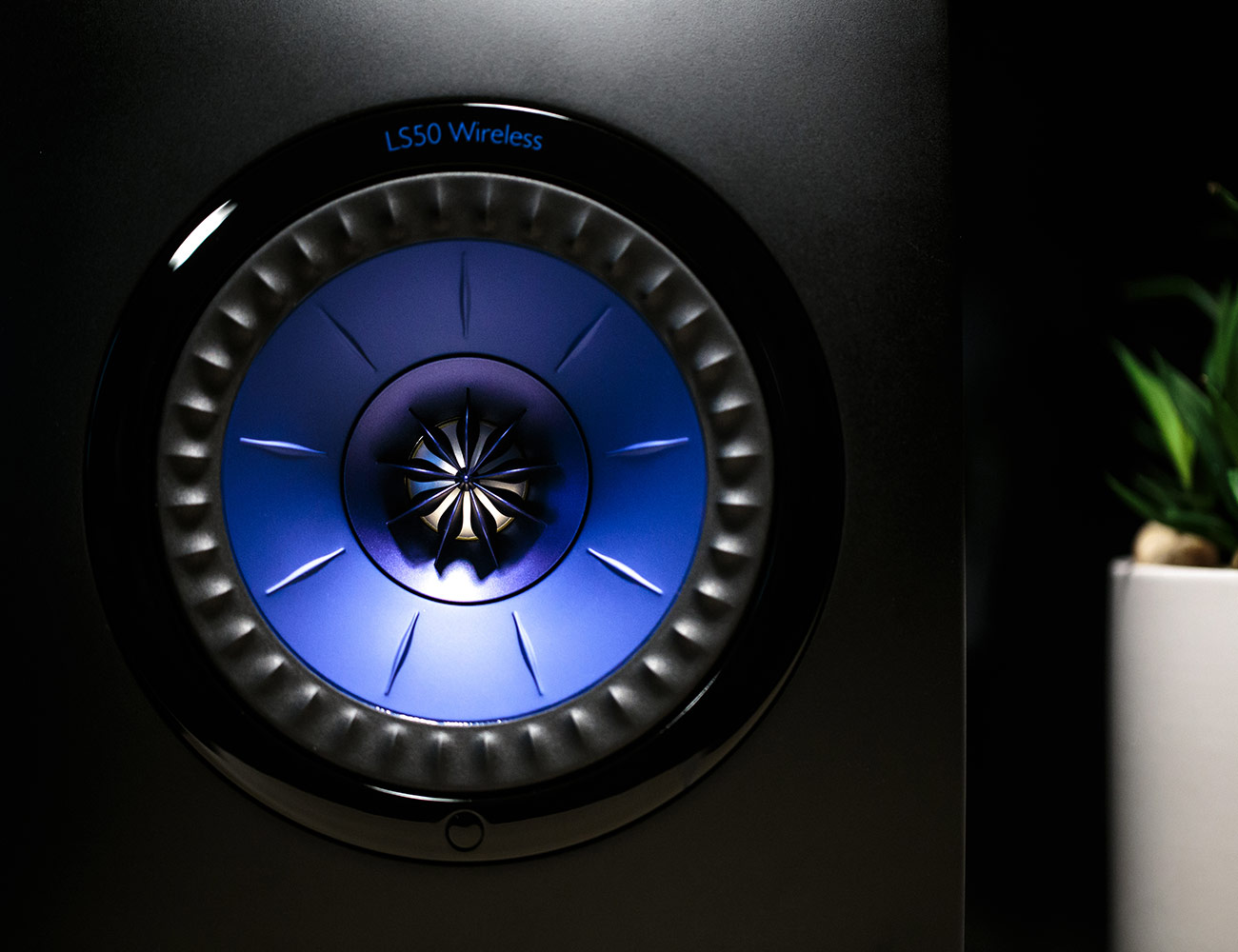The 4 Best Bookshelf Speakers of 2020
The guide to the best bookshelf loudspeakers of 2020 covers everything you need to know before you buy your next pair of audio equipment. We tested a whole host of speakers to find which ones will make the best addition to your home stereo system.
Bookshelf Speakers 101
1. Q Acoustics Concept 300
Q Acoustics is a relatively new loudspeaker brand on this continent but it’s one that you should pay attention to. Having already made a significant dent in the U.K. and Europe against some rather stiff competition from rivals like KEF, B&W and Wharfedale with its affordable but over-achieving 3000-Series, Q Acoustics is now pushing hard into the high-end with the Concept 300 stand-mounted full-range bookshelf loudspeaker.
Best Overall Bookshelf Loudspeaker
Price: $4,499/pair
From: amazon.com
What We Like: The Concept 300 deliver unrivaled levels of coherency, clarity and presence in a stand-mounted design that can compete with significantly more expensive loudspeakers – not that $4,999 isn’t rather expensive for a two-way bookshelf design. Low-end performance is surprisingly deep and taut making them adept with all kinds of music and they will never be the weak link in your system. The slightly scary-looking Tensegrity tripod stand utilizes cutting edge acoustic isolation and plays a significant role in the sound of the Concept 300 – image solidity and soundstage depth are first-rate. Paired with the right amplifier, these are end-game loudspeakers that also look the part.
What We Don’t Like: The Concept 300 need a really good amplifier to really shine. Not the last word in dynamic punch. Stand design might make you nervous even though they work amazingly well.
2. PSB Alpha P5
PSB have been manufacturing award-winning loudspeakers for over 40 years. Audio industry legend Paul Barton plays a significant role at Lenbrook (NAD, PSB, Bluesound) designing not only the PSB and Bluesound loudspeakers, but also the NAD headphones. Rather than pursue building cost-no-object loudspeakers which Barton could do with his access to significant R&D resources, he has focused on the entry-level and products like the Alpha P5 that are remarkable loudspeakers.
Best Budget Bookshelf Loudspeaker
Price: $400/pair
From: amazon.com
What We Like: The Alpha P5 have a lot of competition below $600 but they manage to win the day with an impressive level of transparency, detail and dynamic punch that works with almost every recording you try. The midrange is superb and the bass response from such a small two-way pair of loudspeakers is resoundingly taut and agile even with electronica and hip-hop and driven with entry-level integrated amplifiers. Also the build quality is very high for the price. You can drive these with 35-50 watts and wipe the floor with any wireless loudspeaker for many years to come.
What We Don’t Like: The Alpha P5 sound a lot better with superior amplifiers and that will force you to stretch your budget. The top end can sound slightly etched as compared to the midrange and low end which are far more balanced. The Alpha P5 start to lose their remarkably coherency when you push them too hard – not ideal for blasting Iron Maiden or Tool at really loud listening levels.
3. Wharfedale EVO4.2
Wharfedale is one of the oldest loudspeaker manufacturers in the world and one of the best at designing affordable high-end loudspeakers that can really reproduce a full-range sound that won’t crush your bank account. The EVO Series is a rather radical departure from the acclaimed Diamond range. They not only look more refined but also sound dramatically more polished and dynamic. They’re built overseas to keep the price down, and you’ll be grateful when you open your wallet.
Best Affordable Full-Range Bookshelf Loudspeaker
Price: $1,000 / pair
From: amazon.com
What We Like: The EVO4.2 sound positively like floor-standing loudspeakers when positioned on solid stands and they don’t require a subwoofer either. Midrange is clean sounding with a warm tonal balance that makes them ideal for a lot of solid-state and tube amplifiers. These are not very hard loudspeakers to drive and they can play very loudly without losing any sense of control or focus. Plus, they’re built like tanks and a remarkable value for the money. AMT ribbon tweeter has remarkable extension and a highly detailed presentation that will illuminate better sounding recordings.
What We Don’t Like: The EVO4.2 require heavy-duty stands – prepare to spend $300-500 for a pair that will do these loudspeakers justice. The slightly laid-back presentation might make some listeners think they are not ideal for rock, metal, electronica – and they would be 100 percent wrong if they don’t give them a chance. Beware: these are capable of taking you down the audiophile rabbit hole where you’ll spend years trying every amplifier you can to see what else they can do.
4. Dynaudio Focus 20 XD
This Danish loudspeaker giant has decades of experience designing and building some of the world’s best midrange/woofers and tweeters, and a real understanding of what 21st-century music listeners expect in an active/wireless system. The Focus 20 XD incorporate a very powerful 150-watt amplifier inside each speaker and support for high-resolution digital audio streaming. Like everything they do, the Dynaudio Focus 20 XD are built to the highest standards and benefit from some 40 years of driver research that give them a serious sonic advantage.
Best Active/Wireless Bookshelf Loudspeaker
Price: $6,000
From: crutchfield.com
What We Like: Some may not immediately like their laid-back presentation, but it works better than most for long-term listening at moderate-to-loud volume levels. Dynaudio builds world-class tweeters and the result is a very smooth, airy and detailed top end that makes even horrible recordings easy to digest. The Focus 20 XD can completely vanish in your listening space on good stands reproducing a deep and relatively wide soundstage. Bass response is articulate. The internal amplifier maintains a really strong grip on the woofer but this loudspeaker is not going to shake your room. If you prize midrange refinement and tonal accuracy over a front-row presentation, the Focus 20 XD will be for you. The ability to tweak the loudspeaker to match your room with the rear controls and app is a huge plus.
What We Don’t Like: Being tied to an ecosystem isn’t going to be for everyone. The laid-back presentation will not excite you right away but the Focus 20 XD will grow on you the more you listen and discover little nuances in each recording. These are not bass crunching loudspeakers for those who need that level of low end punch. Require expensive stands to really strut their stuff.
Why Bookshelf Speakers?
Smart speakers have taken a considerable slice of the loudspeaker market over the past twenty-four months, with Amazon and Google both announcing superior-sounding versions of their Echo and Google Home smart speakers, Apple releasing its first-ever smart speaker, and traditional speaker companies, like Bose and Sonos, also getting in on the action. With their ease of setup, their ability to control your smart home gadgets and answer questions, as well as wireless play with other smart speakers, it’s no wonder that smart speakers have traditional loudspeaker manufacturers running scared.
But there will always be a market for bookshelf speakers. Why? Because stereo sound is special. Music that was recorded in stereo, needs to be listened to in that format unless we are content with listening to single loudspeakers again that attempt to simulate stereo or even surround sound with multiple drivers packed into an enclosure the size of a coffee can. Stereo bookshelf loudspeakers do a rather convincing job recreating the soundstage; the physical space (studio, garage, music hall) where the recording was made and that illusion of being there with your favorite artist is a big part of the experience. They also reproduce the scale of the recording in a far more convincing way; crank Led Zeppelin’s “Kashmir” through an Apple HomePod and you will discover just how poorly smart speakers reproduce the dynamics of a challenging track.
Active Versus Passive
Wireless smart speakers are also limited by the amplification that the manufacturer has stuffed inside; space limitations almost dictate the use of Class D or switching amplifiers that are more efficient than traditional linear amplifiers, which require large heatsinks to dissipate heat. Class D amplifiers have improved greatly in recent years in regard to sound quality and require less space, are cheaper, and weigh less.
If you really care about sound quality, you have plenty of passive (which require amplification) and active loudspeaker (with built-in amplification) options to select from. Passive loudspeakers are more flexible as you can experiment with different types of amplifiers, DACs, and placement options. Active loudspeakers are a better option for listeners who don’t want the added expense of multiple components, and an equipment rack filled with cables. The trade-off with any active loudspeaker is that you are committed to how the final product sounds. There is no way to try another amplifier or DAC (Digital-to-Analog Converter) to alter the sound. Active loudspeakers also require at least one of the loudspeakers to be plugged into the wall; limiting how you set the speaker up in your space. One thing is for certain, there is no shortage of affordable passive or active bookshelf loudspeakers for all types of spaces.
Analog or Wireless
It’s also worth considering wireless bookshelf speakers if you want the option to stream audio straight from your laptop, tablet or computer. A lot of newer models have either built-in wi-fi, Bluetooth or both. In addition to being really easy to use, this added connectivity gives wireless bookshelf speakers a few distinct advantages over bookshelf loudspeakers. They don’t require a direct connection to both an amplifier and source, like traditional analog speakers. They have fewer restrictions as to set-up locations or built-in amplification. And they most likely support the streaming services that you already pay for.
In the past, the major Achilles’ heel for wireless loudspeakers was sound quality, but that has taken a major leap forward in recent years, with products like the KEF LS50 Wireless and Devialet Phantoms. Wireless loudspeakers now feature high-performance internal amplification, phono pre-amplifiers, DACs, and support for major streaming platforms such as Spotify Connect, Airplay 2, Tidal, Pandora, and others. The one thing to always remember with all wireless loudspeakers is that they still require a power source — they’ll take up a wall outlet — and some wireless models require a tether from the master loudspeaker to the slave as the amplification is only built into one speaker.









